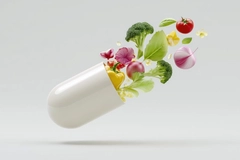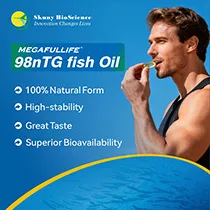SPECIAL REPORT: Sports Nutrition – The Winning Solution
29 Mar 2016

29 Mar 2016 --- Following ‘Nutrition and Hydration Week’ (March 14-20), NutritionInsight drinks-in the latest developments in sports nutrition research, and how this affects the food and beverage industry.
Water has an important function in the body: from maintaining a consistent body temperature and preventing overheating to aiding in the function of joints, tissues, saliva and digestion.
Basic signs of dehydration include thirst, irritability and general discomfort followed by headache, weakness, dizziness, cramps, chills, heartburn, vomiting, nausea, head or neck heat sensations and decreased performance.
“Water requirements vary from person to person and the recommendations are average requirements (2 and 2.5 liters/day for women and men respectively, Source: EFSA). The main determinant of water requirements is energy expenditure and roughly we need 1ml/kcal. Requirements are greater than normal during hot weather especially if the humidity is low and at high altitude” Tom Sanders, adviser to the Natural Hydration Council and emeritus Professor of Nutrition and Dietetics at Kings College London told NutritionInsight.
But too much water can also be dangerous and may lead to hyponatremia, although this is rare. When performing, athletes should drink only as much fluid as they lose due to sweating during a race. Thirst is generally a good guide to how much water or other fluids is needed, however, it is recommended that extra liquids be consumed for demanding activities.
Nutrition for optimal performance
There are several different guidelines for appropriate carbohydrate (CHO)- based nutrition before, during and after various types of athletic activity – but which are the best CHO fluids for best performance? According to the AIS, the Australian strategic high performance sport agency, fluids consumed during exercise, should meet the following criteria:
There are several different guidelines for appropriate carbohydrate (CHO)- based nutrition before, during and after various types of athletic activity – but which are the best CHO fluids for best performance? According to the AIS, the Australian strategic high performance sport agency, fluids consumed during exercise, should meet the following criteria:
- have a palatable flavor to encourage greater fluid intake
- contain 6-8 percent CHO
- contain electrolytes such as sodium and potassium
- be non-carbonated
The Market
Sports drinks are beverages whose stated purpose is to help athletes replace water, electrolytes, and energy after training or competition. However, their efficacy for that purpose has been questioned, particularly after exercise.
Sports drinks are beverages whose stated purpose is to help athletes replace water, electrolytes, and energy after training or competition. However, their efficacy for that purpose has been questioned, particularly after exercise.
Isotonic drinks generally contain between 4g and 8g of sugar (CHO) per 100ml and has about the same osmotic pressure as bodily fluids. An isotonic drink is taken up by the body about as quickly as water. They are intended to quench thirst and provide energy to the body, and are ideal for endurance sports.
Canadian company Northstar Organic claim to have the only organic sports drink that blends organic coconut water electrolytes with real fruit: “We've had an overwhelming uptake regarding our product in the sports nutrition market,” company president Shahab Samimi told NutritionInsight.
“Consumers and athletes have finally found an organic product that’s based on real foods, with ingredients they can pronounce and more importantly something that taste great. Compared to the overtly salty, sugary products made with synthetic ingredients,” he added.
They have plans to extend their range and obtain a more global presence: “We feel like we're leaders and innovators, aligning with the needs of consumers and look to inspire change,” Samimi concluded. At present, 10 percent of the company's sales go to support two Canadian athletes that will be competing at the 2016 Rio Olympic Games.
Hot vs cold?
This month, Loughborough University – which has long been recognized for its sports and exercise research – published research assessing the potential of how 13 different commonly consumed beverages affect hydration status. A beverage hydration index (BHI) was developed as a useful measure to identify the short-term hydration potential of different beverages when ingested in a euhydrated state (normal state of body water content, typically about 40 liters).
This month, Loughborough University – which has long been recognized for its sports and exercise research – published research assessing the potential of how 13 different commonly consumed beverages affect hydration status. A beverage hydration index (BHI) was developed as a useful measure to identify the short-term hydration potential of different beverages when ingested in a euhydrated state (normal state of body water content, typically about 40 liters).
But which is better- hot or cold drinks? Ronald Maughan, lead author and Emeritus Professor of Sport and Exercise Nutrition, told NutritionInsight: “There is no simple answer. The two key issues in the formulation of sports drinks are efficacy and taste. Efficacy alone is not enough – if it does not taste good, no-one will drink it.”
“The optimum temperature will depend on the situation: in endurance events on a hot day, cold drinks are best as they help reduce body temperature by acting as a heat sink. It half time of a football game on a cold day, a hot drink may have some advantages,” Maughan concluded.
Coconut water and vegetable juices such as beet have already been publicized as good rehydration beverages. However, sports scientists are now touting rooibos tea as an effective way for runners to stay hydrated and to enhance their performance.
Unlike other teas, Rooibos tea has performance-boosting benefits for runners as it contains higher zinc, manganese and antioxidant components.
Ernest du Toit, spokesperson for the Rooibos Council in South Africa, said: "Rooibos contains measurable levels of calcium, copper, iron, magnesium, sodium, potassium and zinc, which offers athletes the critical electrolytes and minerals they need for sustained performance.”
Rooibos tea can be used as a pre-run or mid-race hydration, or to boost post-run recovery. Runners should consume at least 500ml of liquid an hour to sustain energy levels during the race. Because rooibos has no caffeine, higher consumption can be taken without unwanted side effects.
In order to maximize its benefits, the rooibos leaves/bag should be brewed for at least 5 minutes – steeping it for longer will increase the antioxidant content of the tea by 30 percent. Boiling water should not be poured directly on the leaves as this destroys the antioxidants. The tea can then be enjoyed immediately (hot) or stored in the fridge and drunken cold.
Although energy drinks, which contain up to 3 servings of caffeine in combination of other ingredients, are consumed to improve athletic performance, they are not designed to be fluid replacement beverages. Research has shown mixed results in terms of hydration and CHO delivery/absorption.
“While sports drinks have a role to play in training, particularly for elite level endurance athletes, they are often used inappropriately as recreational drinks. It is important to remember that these drinks can contain quite a lot of sugar which adds calories to the diet”, Sanders explained to NutritionInsight.
Food and supplements
But what about food? Fruit and vegetables can account for approximately 20 percent of fluid intake: radishes have 95 percent water content whilst green peppers are 94 percent water. Cucumber, grapefruit and watermelon are also good sources of fluid.
But what about food? Fruit and vegetables can account for approximately 20 percent of fluid intake: radishes have 95 percent water content whilst green peppers are 94 percent water. Cucumber, grapefruit and watermelon are also good sources of fluid.
However, sometimes fluids and food just aren’t enough: “Because athletes use greater volumes of oxygen than their sedentary counterparts, it’s long been assumed that they need greater amounts of protective antioxidant nutrients such as vitamins A, C, E and naturally occurring compounds in brightly colored fruits and vegetables called phytochemicals,” Andrew Hamilton, member of the American College of Sports Medicine, who specializing in sport and performance nutrition, states.
Although the practice of taking large doses of antioxidant supplements such as vitamins C and E has been commonplace among athletes, research has shown that the benefits are far from clear.
Mouth rinses
CHO ingested too close to competition can, in certain cases, cause a reactive hypoglycemia (low blood sugar) that may predispose the athlete to unnecessary fatigue or even compromise mental sharpness.
CHO ingested too close to competition can, in certain cases, cause a reactive hypoglycemia (low blood sugar) that may predispose the athlete to unnecessary fatigue or even compromise mental sharpness.
It is well accepted that CHO drinks can enhance performance. But studies now suggest that swallowing that sports drink might not always be necessary. As CHO does not run out during exercise of one hour or less duration, blood sugar concentration does not drop, ingesting CHO during exercise should not have an effect.
In the December 2015 issue of the International Journal of Sport Nutrition and Exercise Metabolism, a mouth rinse trial in joggers compared a placebo beverage (water with a non-caloric sweetener) with a 10 percent maltodextrin solution (easily digestible CHO) fashioned into a 25 ml solution that was rinsed in the mouth for ten seconds before spitting out.
Performance was improved. The researchers speculated that the mouth rinsing may have tricked the brain into thinking more CHO was on the way when the body's stored energy (glycogen) was running low due to the intensity of exercise. However, other research related to peak power in cyclists tends to refute this theory.
There have been numerous other CHO mouth rinse studies measuring performance. Although some studies did not find differences (at least not statistically), the majority show positive effects of a CHO mouth rinse.
According to Ironman triathlete and sports nutrition scientist Professor Asker Jeukendrup, a CHO mouth rinse may be an option to competitors who experience gastrointestinal upset or delayed gastric emptying from drinking CHO beverages during prolonged competition.
Good nutrition and hydration is vital in all stages of life – whether running a marathon or a marathon of errands. As sports nutrition is a very active area of research, it is hoped that people will have a sporting chance of getting enough nutrition and hydration for all their athletic needs.
by Kerina Tull
All content and features on this website are copyrighted with all rights reserved. The full details can be found in our privacy statement
Subscribe to our newsletters
By continuing to browse our site you agree to our Privacy Statement












